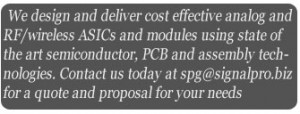PCB design for high frequencies deserves special treatment as all those who have ever done it know well. One of the pitfalls is the neglect of using correct sizes of trace lengths/widths or ignoring the effects of not using these numbers. So to summarize: every trace on the board has a resistance which will generate spurious response if not taken into account and corrected for ( very tedious after the first iteration layout). Every trace will have a characteristic impedance associated with it so reflections will be there whether we like it or not. In some really bad cases ( and the author has had experience of it) reflections can actually latch an IC believe it or not, and burn it. So Zo should be taken into account Many, many scripts are available on the web for calculating this ( although a number of them can only do it for a limited lower end of width/substrate thickness ratio ( script fails for W/H < 0.1). Also trace inductance can become a real issue in some cases. So using the same scripts as mentioned above the capacitance of the trace/unit length can be calculated and the inductance extracted from the Zo number and the calculated capacitance number through the basic equation of Zo ( ideal case) , Zo=sqrt( L/C). For more information and other items of interest please go to our website at http://www.signalpro.biz.
Analog, RF/Wireless ASIC and module design, development and manufacturing
Design, develop, manufacture and deliver great analog and RF/Wireless Integrated Circuits and modules.

